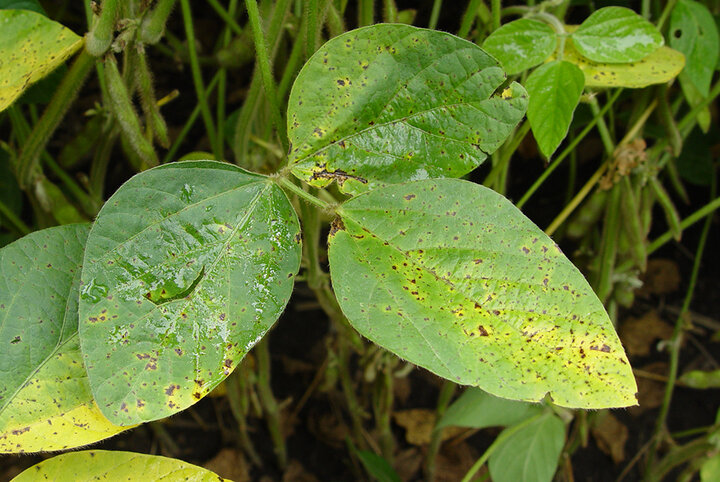In a multi-year summary of soybean studies with fungicide and insecticide applications in the north central United States, university researchers combined trial data to estimate overall profitability of foliar applications at the R3 growth stage (beginning pod development).
The overall data set included studies from 2008 through 2014 in Illinois, Iowa, Indiana, and Nebraska. Nebraska data included in this analysis was from nine locations studied in 2011 and 2012. The study evaluated the response with fungicide alone and fungicide with insecticide applications. Continued changes in market price and the widespread use of fungicides and insecticides in absence of disease and/or insects was a driving force to develop this collection of data for publication.
The primary fungicide modes of action included in the study represent the three main categories in the agricultural market:
- demethylation inhibiting (DMI),
- quinone outside inhibiting (QoI), and
- succinate dehydrogenase inhibiting (SDHI).
The majority of products used were either QoIs or combinations of QoI and DMI active ingredients, which reflects the current fungicide market. In this set of studies, foliar diseases were not at a level of significant yield loss and insect levels never reached threshold.
Fungicide and insecticide applications were observed to increase yields. When an economic analysis was performed, the applications were profitable only 45% of the time based on average market soybean price over the years of studies included. In this study, insecticide applications were almost as profitable as the insecticide + fungicide application. This would indicate that input costs could be reduced by scouting for insects and making timely insecticide applications only when needed.
Soybean farmers and commercial agricultural clientele often indicate that the maximum return occurs when adding insecticide to a fungicide application. This research summary supports this statement; however, even with the addition, it was profitable less than 50% of the time. The fungicide application alone was profitable only 14% of the time.

As a result of this work, a calculator analyzing yield and economic response from foliar fungicide and insecticide application in the North Central United States was developed to allow for input of soybean price and chemical and application cost. This calculator shows the percentage of time a treatment would be profitable, based on the summary of this study.

If you are a soybean farmer with significant foliar disease issues, fungicide applications will be more profitable than suggested in this article. If you have been using these products and seeing consistent return on your investment, there is no need to stop use. However, if you are evaluating potential inputs in the absence of diseases, your potential for a return on investment with low soybean commodity prices will be low.
In addition to considering profitability of fungicide use, growers may also want to consider inintended consequences of fungicide applications. Fungicide use across the U.S. is resulting in increased pathogen resistance issues. Currently, two soybean pathogens — frogeye leaf spot (Cercospora sojina) and Cercospora leaf blight (Cercospora kikuchii) — have been identified to have resistance to QoI fungicides in the Mississippi delta and southeast U.S.
To avoid development of pathogen resistance, we recommend using fungicide products with multiple modes of action. Some new fungicides even have three modes of action. These efforts, supported by industry through the Fungicide Resistance Action Committee (FRAC) to encourage multi-mode of action products, are part of an integrated management plan to minimize the potential for fungicide resistance. The Crop Protection Network offers a quick guide to common questions about fungicide resistance at http://cropprotectionnetwork.org/general-crop-management/faqs-fungicide-resistance/.
This article describes findings reported in the research publication, Analyses of Yield and Economic Response from Foliar Fungicide and Insecticide Applications to Soybean in the North Central United States shows Limited Response with Fungicide Use, published in the September 2016 Plant Mangement Network, an on-line journal of the American Phytopathological Society focusing on management studies. Authors were Y. Kandel, D. Mueller, C. Hart, N. Bestor, C. Bradley, K. Ames, L. Giesler, and K. Wise. https://www.plantmanagementnetwork.org/
Disclosure
In accordance with the University of Nebraska-Lincoln’s Conflict of Interest policy, the Conflict of Interest Review Committee has determined that it must be disclosed that Dr. Giesler has financial interest in Field Screen, LLC which receives funding from agricultural companies for pesticide testing in southeast Missouri. For more information on this disclosure please see his CropWatch Bio.

